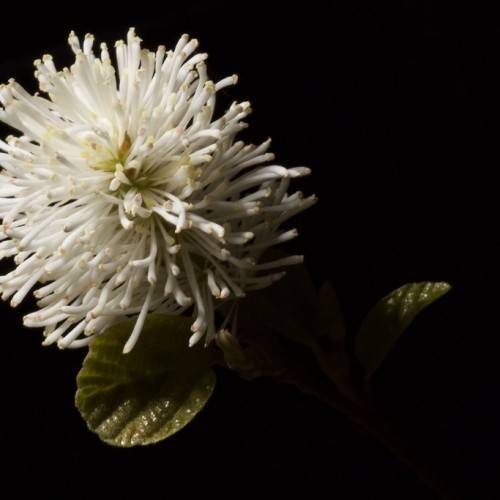
dwarf fothergilla
Fothergilla gardenii
Also Known As - witch alderCycle:
Perennial
Watering:
Average
Hardiness Zone:
5 - 8
Flowers:
Flowers
Sun:
Full sun,part shade
Soil:
Acidic, Humus rich, Well-drained
Fruits:
Fruits In Summer Ready In Fall
Leaf:
Yes
Growth Rate:
Moderate
Maintenance:
Low
Drought Tolerant:
Yes
Care Level:
Medium
watering
Dwarf fothergilla (Fothergilla gardenii) should be watered thoroughly once a week, making sure to saturate the soil. Water at the root zone, avoiding wetting the leaves. During periods of extreme heat, water twice a week. As with all plants, avoid overwatering, as this can lead to root rot. Ensure that the soil drains well and that the root zone does not remain constantly wet or soggy.
sunlight
Dwarf Fothergilla (Fothergilla gardenii) prefers full to partial sun. It should receive at least 4 to 6 hours of direct sunlight each day for optimal growth and flowering. For best results, position the plant so it can receive morning sunlight, and it can be in the shade in the afternoon. Too much intense sunlight can cause leaf burn, so a location with some afternoon shade is advisable.
pruning
Dwarf Fothergilla (Fothergilla gardenii) is a versatile shrub that can thrive in USDA zones 4 to 9. Pruning is essential to maintain its shape and encourage denser growth. Generally, pruning should be done in late winter or early spring before new growth appears. Remove no more than 20-30% of the shrub’s foliage each year and avoid over pruning. Begin by removing dead or diseased branches, followed by thinning of older stems and interior branches to open up the shrub’s structure. The dwarf fothergilla should only be pruned to develop its size and shape, so pruning for flower production is not necessary. Always use sharp, sterilized pruners to prevent the spread of disease.
